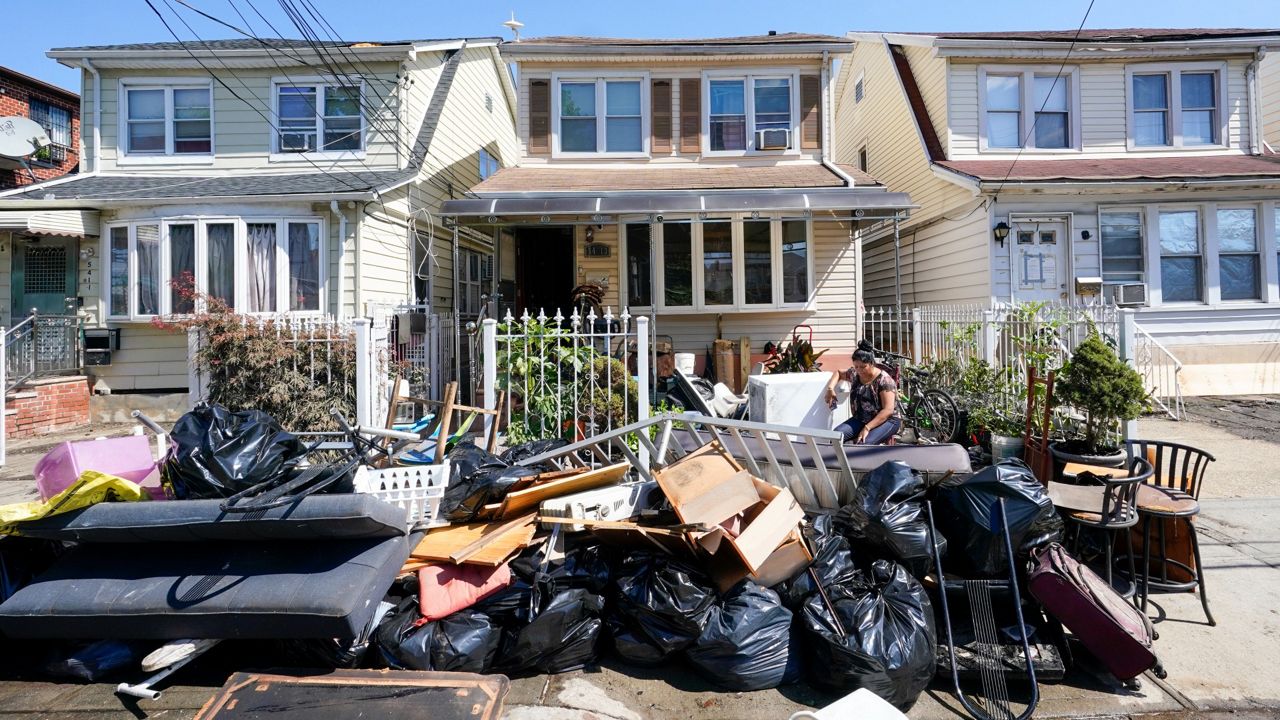At an oversight hearing Tuesday on the catastrophic and deadly flash floods caused by Ida two weeks ago, City Council members sought to emphasize the gap between agencies’ efforts to address the risks of climate change and the city’s considerable infrastructure needs.
Agency leaders defended their efforts, but said that they face budget limits that prevent them from instituting the kind of sweeping and immediate changes that the climate crisis clearly requires of the city.
“If we’ve given that impression, that we think we're doing enough, we know we’re not,” Department of Environmental Protection Commissioner Vincent Sapienza said. “We know we need to be doing more.”
The hearing featured the leaders of the city’s environmental protection, sanitation and emergency management agencies, as well as the head of the mayor’s resiliency office and a representative of the MTA.
In early testimony, agency leaders emphasized the wild card the weather had dealt the city, dumping an unprecedented 3.19 inches of rain in an hour in some places. The city’s sewage system has for 50 years been rated to handle 1.75 inches per hour, Sapienza said.
The rains caused by Hurricane Ida overwhelmed New York City sewers, but the city said it is still working on fixing bottlenecks and expanding storm sewers to areas that don’t have them.
Despite being inundated two weeks earlier by Tropical Storm Henri, the city did not prepare similarly for Ida because of how different weather patterns are reported to and considered by the city, John Scrivani, the city’s emergency management commissioner, testified.
Whereas the approach of Henri, in the Atlantic Ocean, set the city into a frenzy of emergency preparation, Ida, which came over land after hitting New Orleans, did not, because the alert for the storm did not come through the National Weather Service’s hurricane office, Scrivani said.
Ida did not present the same risk of coastal flooding that Hurricane Sandy did in 2012, he added.
The answer, agency leaders said, is to consider every storm that comes to the city as a significant risk.
“Are we going to go to the mattresses, so to speak, for every storm?” asked council member Justin Brannan, the chair of the resiliency and waterfronts committee, whose district in southwest Brooklyn saw flooding in hundreds of homes during Ida.
“If they tell us there's six inches of rain, we’ll work with the team to assume that could come down in one hour, potentially,” Scrivani answered.
Council members questioned the agency leaders on their stated achievements in building-resilient infrastructure.
City agency leaders said they run the “most aggressive” green infrastructure program in the country, adding rain-catching gardens to the streetscape, among other features. But those projects divert only a fraction of stormwater from the overburdened sewer system, officials acknowledged.
There are about 600,000 trees lining streets throughout New York City, but only 11,000 such curbside rain gardens, designed to capture rainwater and prevent sewer overflows, have been built or are under construction, officials said.
Council members acknowledged the efforts of city sanitation and emergency response workers in pumping out waterlogged homes and removing debris from hard-hit neighborhoods.
“I know that you did the best you could,” said Ydanis Rodriguez, chair of the council’s transportation committee.
Yet even long-term improvements from the agencies, such as a years-long, $1.9 billion initiative to add storm sewers to much of southeast Queens, paled in the face of Ida’s devastation, they said.
“I am here attest to the fact that the recent investment in southeast Queens has worked,” said I. Daneek Miller, who represents part of the area. “We are very appreciative of that. But you cannot quantify the success of that program when you measure that against the loss of life. And we had that as well.”
In order to prevent the worst effects of weather disasters like Ida, city leaders said, they need infusions of funding from the federal government, which they hope to come from the infrastructure bill and budget reconciliation. That would enable the city to update the sewer system without increasing water rates, Sapienza said.
The city recently received a federal grant to study backwater valves, which prevent water from surging back into a home through a toilet bowl, and where they would be most effective, according to Jainey Bavishi, the head of the resiliency office.
But according to officials, federal funding has in some cases limited the scope of resources, such as a tool to educate homeowners on flood risks that was funded with post-Sandy federal relief dollars, and is limited to areas that face risk of coastal flooding.
The city’s recent mapping efforts predicted the worst damage from Ida, Bavishi said. The “extreme scenario” of flood risk maps included in the resiliency office’s Stormwater Resiliency Plan mirrored some of the hardest-hit areas in Queens.
But that scenario was based on estimates of sea level rise for the 2080s. Bavishi acknowledged that the initiatives in the plan, with due dates set for as far out as 2031, need to be moved up.
Some of the city leaders who testified Tuesday are part of an emergency task force the mayor convened in the wake of Ida, which has met nearly every day since the storm, Scrivani said. The task force will release a report on their recommendations next week, he added.
Council member Mark Levine said the city is in desperate need of a plan to scale up its current resiliency efforts.
“We have huge potential to divert billions of gallons of water from going into our sewers, to eliminate flooding, to eliminate overflow into the rivers,” he said. “None of what we've done is enough.”
